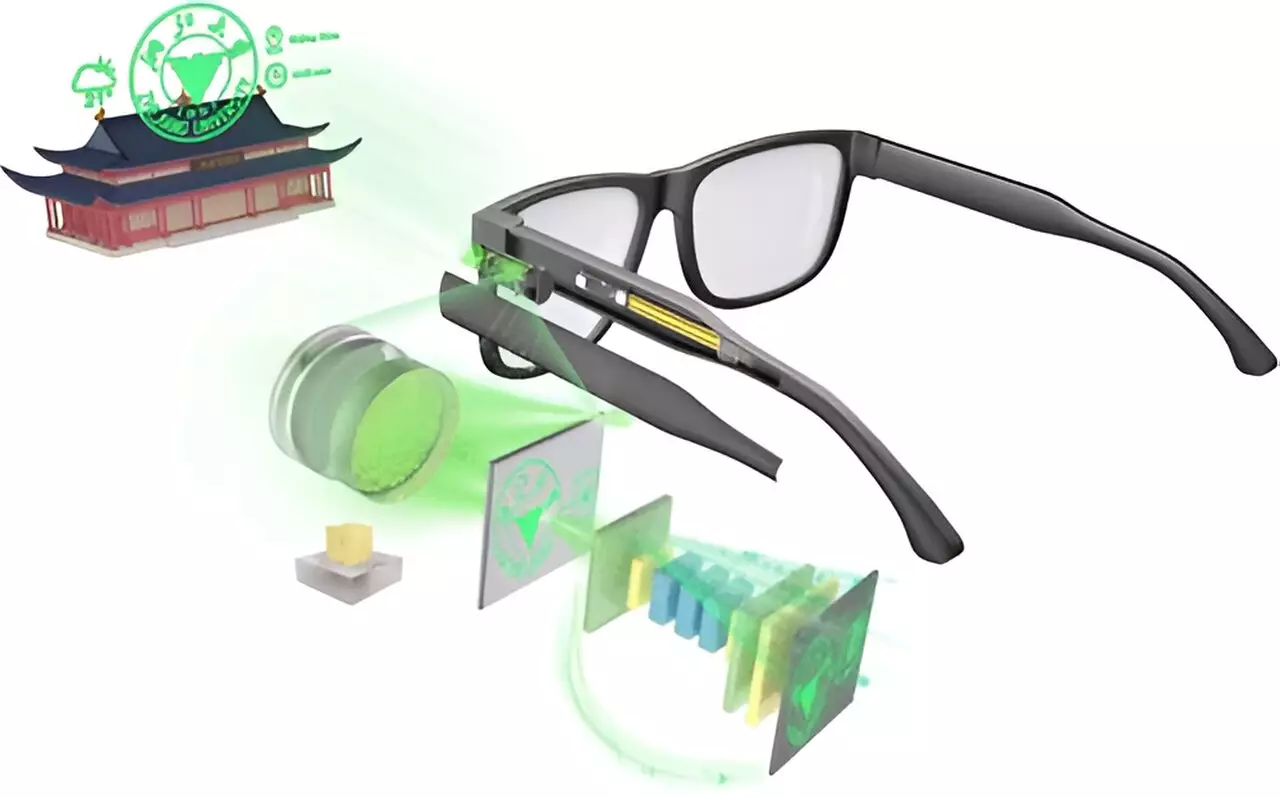Augmented reality (AR) technology is rapidly evolving, going beyond its traditional applications in gaming to influence various fields, including healthcare and transportation. At its core, AR superimposes digital content onto the physical world, crafting interactive experiences that bridge the gap between virtual and real. This technological marvel is poised to revolutionize intricate tasks such as surgical procedures and the operation of autonomous vehicles. Given the growing demand for integration in everyday personal devices, researchers are now focused on enhancing AR technology’s accessibility and functionality through innovative engineering.
Recent advancements reported in ACS Photonics outline significant strides toward making high-quality AR displays more compact and efficient. A team of researchers has crafted a prototype that combines two optical technologies — ametasurface and a refractive lens — streamlined into an eyeglass format. The crux of their innovation lies in a novel design that addresses two prevailing challenges in AR: the bulkiness of existing systems and the compromise in image resolution that comes with downsizing optical components. By employing a microLED screen integrated with these optical elements, the researchers have developed a hybrid display that not only reduces the number of lenses but also maintains exceptional image clarity.
This prototype features a metasurface, which is an ultra-thin film crafted from silicon nitride, meticulously etched to manipulate light emanating from an array of tiny green microLEDs. This intricate design allows precise control over light direction and focus, enabling high-quality image projection. To enhance the image further, a synthetic polymer refractive lens is employed. This lens sharpens the projected image while minimizing optical aberrations, thereby ensuring that the final display is both crisp and lifelike without the cumbersome hardware found in traditional AR systems.
The team, led by Youguang Ma, conducted rigorous testing on the eyeglasses prototype, utilizing advanced computer algorithms to correct image imperfections in real-time. Remarkably, the hybrid system achieved less than 2% distortion across a 30-degree field of view, showcasing a performance level comparable to current four-lens AR technologies.
Of particular note is the improvement seen in their testing of a reprojected image of a red panda. The prototype displayed a 74.3% structural similarity to the original image, marking a 4% enhancement following algorithmic correction. Such precision underscores the potential for these advancements to expand from monochrome displays to vibrant full-color environments, signaling a transition to a new era of mainstream AR glasses.
As the technology behind augmented reality continues to advance, the research highlighted serves as a pivotal step toward practical application and mass adoption. With ongoing development, this hybrid AR display could significantly impact the way we interact with digital content, ultimately enriching our daily lives through immersive experiences. By addressing current limitations and enhancing the user interface, the groundwork is being laid for a future where AR becomes an integral part of everyday technology, revolutionizing how we work, play, and communicate.


Leave a Reply